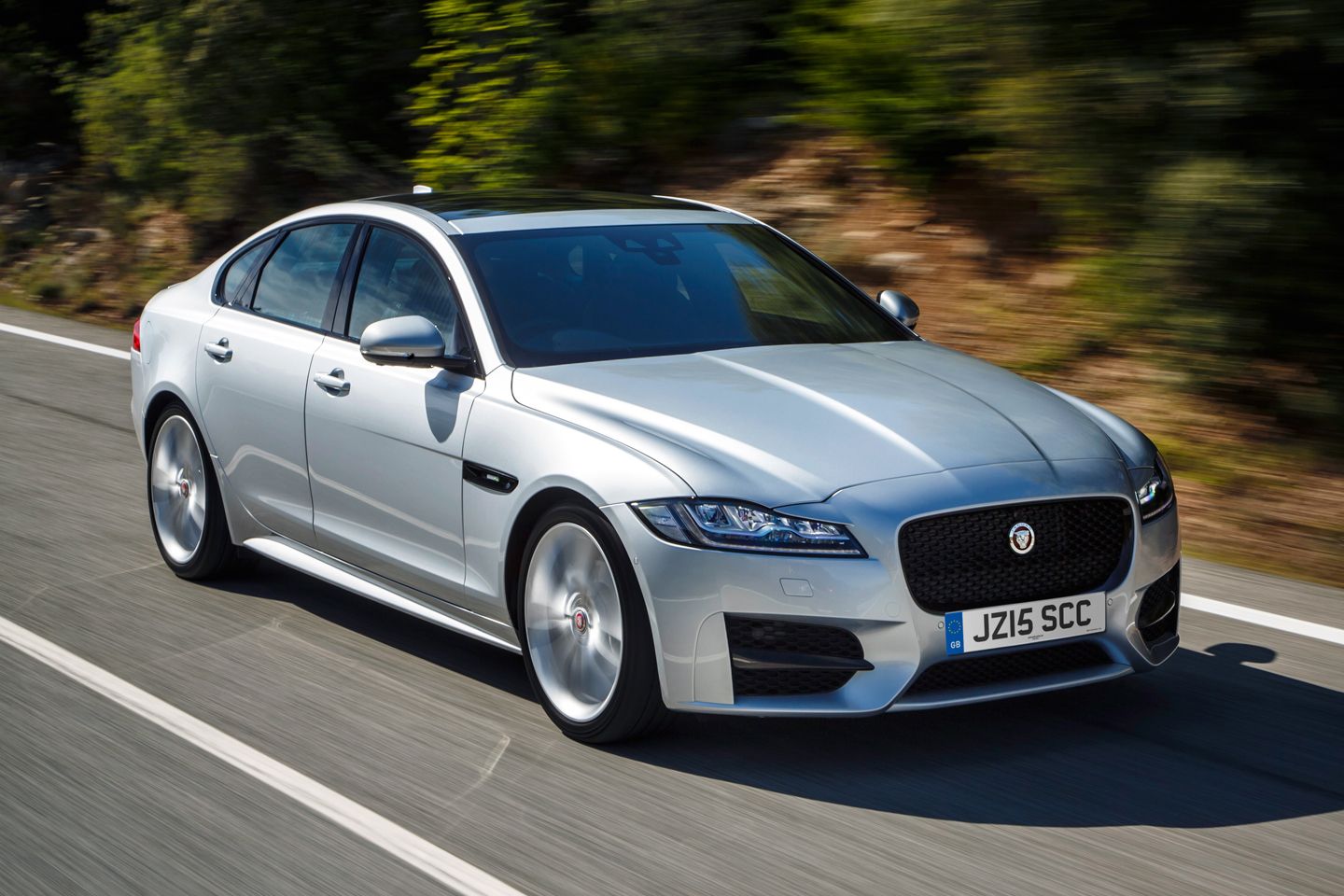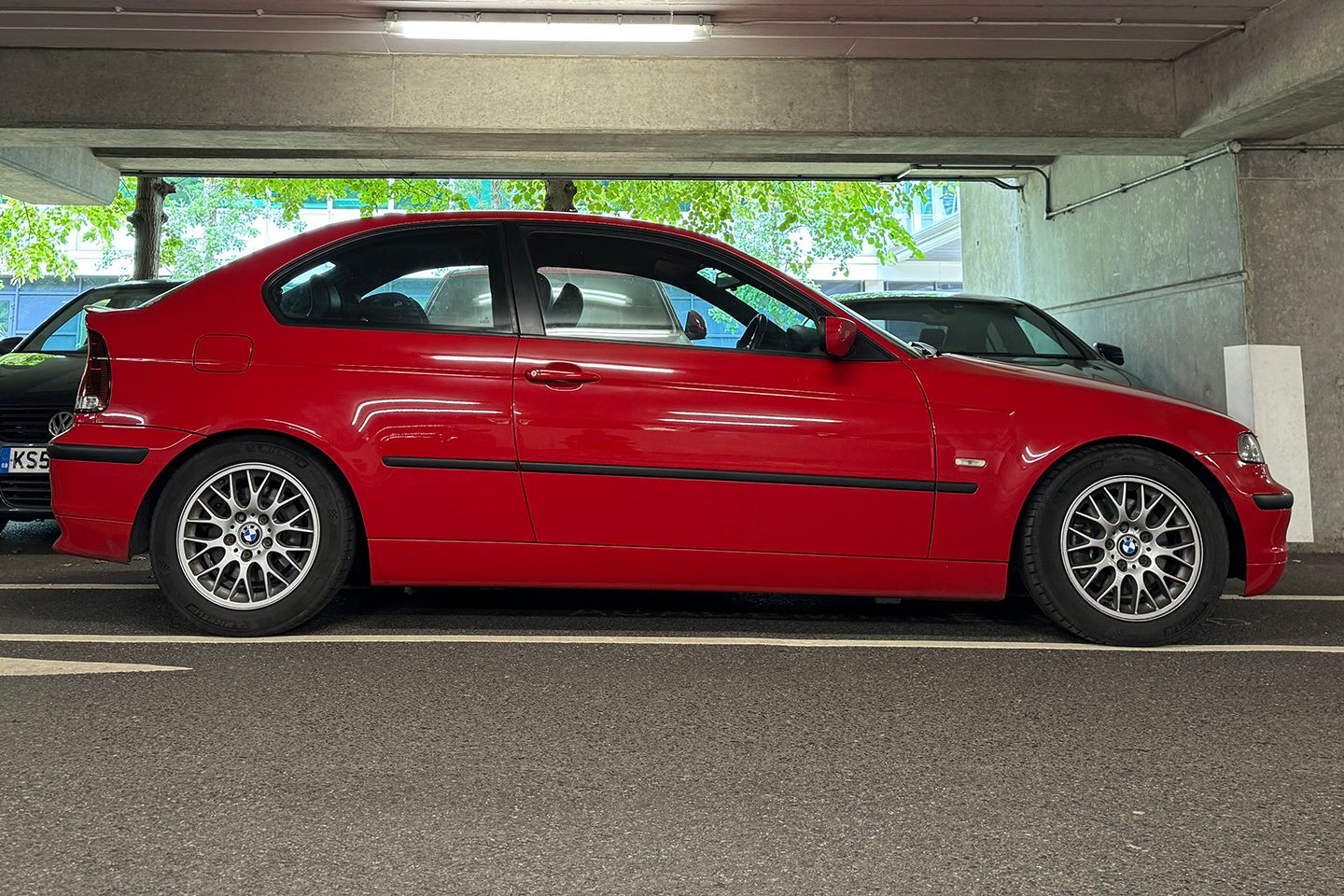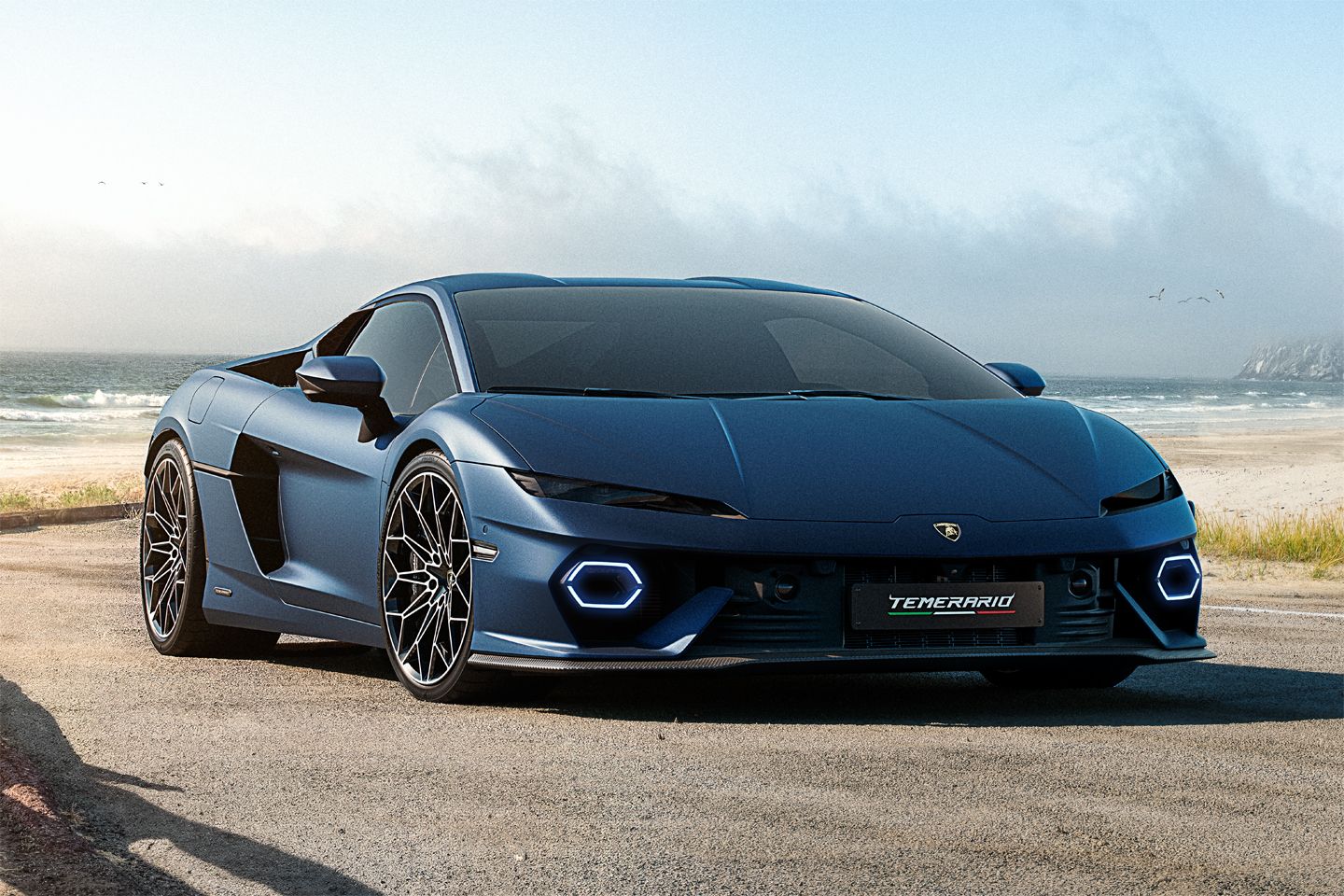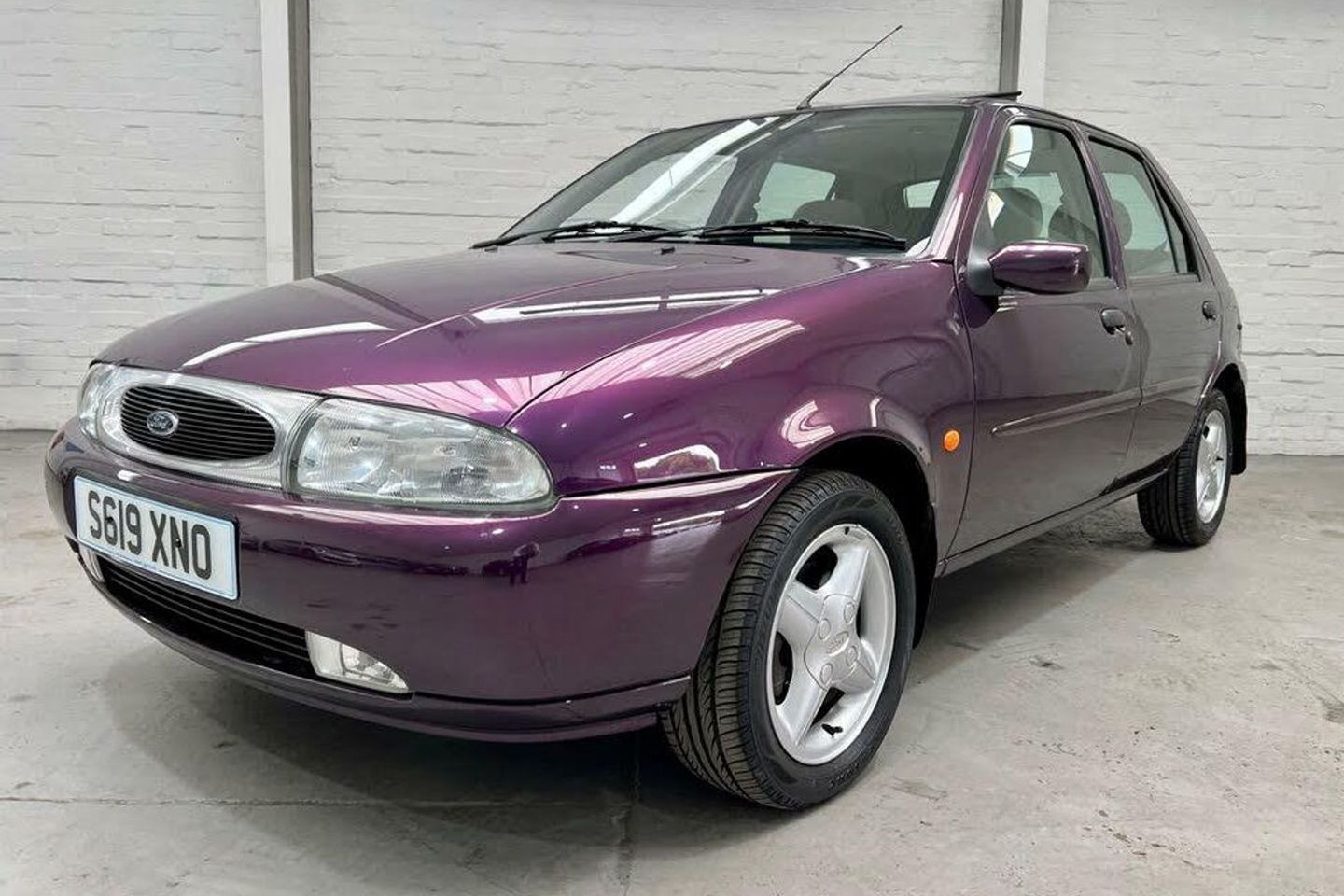
Key considerations
- Available for £13,000
- 3.0-litre V6 supercharged petrol, rear-wheel drive
- Might not be loud enough for some
- Cheap power though and a lovely chassis
- Not problem-free
- Make sure all the recall and ‘common issues’ work has been done
You may not have noticed it but after a 17-year production run, Jaguar has just stopped making its XF, the midsize exec that up to now has been sitting neatly between the XE and the XJ in both saloon and Sportbrake estate formats.
The XF is one of five Jaguar model lines getting the chop in 2024. It and the XE and F-Type have already come to a halt. The E-Pace and I-Pace EV are due to stop in December ’24 as the company attempts to whirr inconspicuously out of its failed ‘mass premium products’ era and into a new, all-electric era beginning in 2025.
Most recently built in India and China as well as Castle Bromwich, the current and last XF is the gen-two X260 which made its debut at the New York motor show in 2015. This new XF was much more than a simple rehash of the old one. 83 per cent of its parts were new. It was lighter than its predecessor and 0.3 inch shorter overall, but a 2-inch extension to the wheelbase increased interior space. The core attributes shared by both old and new XFs were chassis plushness, rear-drive poise, sweet steering, and a cabin that might not have looked quite as effortlessly high-quality as German-built rivals but which was nevertheless more than luxurious enough for most, with some jazzy tricks thrown in for extra showoff appeal like the rotary shift controller.

Three out of the four engines in the new 2015-on XF powertrain range were diesels. You could have 160hp or 177hp versions of the 2.0-litre inline four Ingenium diesel, with either an automatic gearbox or a new 6-speed manual. They offered an official combined economy figure of up to 70mpg. The third diesel was a 295hp 3.0-litre V6 that was plenty fast enough to deserve its S badge, with a 0-62mph time of under six seconds. Even that gave you 52 miles for every gallon combined, but this is PistonHeads so we’re looking for a meaty petrol motor, aren’t we?
We’re discounting the smaller Ingenium four-cylinder engines on account of the fairly significant mechanical issues some of them had, like timing chain problems and critically low engine oil level warning lights that came on even as the major internal damage was already taking place. We’re also going to give the 3.0-litre diesel V6 a swerve because although it was at least as quick as most other stuff on the road in just about every real-world driving situation, it too could suffer from potentially disastrous oil starvation issues, spinning main bearings or snapped crankshafts.
Sadly the 5.0-litre V8 petrol wasn’t politically or environmentally correct enough to stick around for the gen-two but Jaguar chucked enthusiasts a bone by fitting the supercharged 375hp 3.0-litre V6 from the F-Type and the E-Pace to the XF to create the bodykitted 3.0i V6 S/C S. You’d expect that to be the most fun gen-two XF choice, so that’s the one we’re going to be focusing on here, but will it also be a better long-term ownership proposition? We’ll get into that as we go on.
We did say that the 2015-on X260 was the current and last XF, which is true if you discount the two refreshes it went through in 2020 and 2024. Although we’re not covering these refresh models here we’ll quickly mention the October 2020 one for the 2021 model year XF in case you do want to consider something newer. The prices and trims for these (let’s call them) gen-2.5 XFs were rationalised to make the by then slow-selling XF more competitive against the 5 Series BMW and the E Class Mercedes. In fact, the starting prices of £32.5k for the 2021MY saloon and £36k for the Sportbrake were practically the same as the launch prices for the first gen-two in 2015, making the later XFs look like quite the bargain next to their German rivals. Not necessarily those from the same class either. A top-spec D200 Sportbrake was £8k less than a BMW 320d Touring, let alone anything with a 5 Series badge on it. That same Sportbrake was a full £10k cheaper than a Mercedes C220d Estate.

The downside of the 2021MY cars was that both of the six-cylinder engines – the diesel as well as the blown petrol – were binned as total XF discontinuation day drew ever nearer, leaving just one 2.0-litre 200hp diesel four and two 2.0-litre turbo petrols, a 247hp and a 295hp with all-wheel drive, to power the last XFs. This last refresh brought new bumpers front (with larger intakes) and rear, a new grille, and interior tweaks including the latest Pivi Pro dual-sim infotainment system operating through a curved glass 11.4in touchscreen.
Relative to other cars in this space, the XF remains good value in mid-2024 after one final ’24 model year revision. Jaguar’s UK website tells us that these final XFs now start at just under £37k for a basic R-Dynamic S D200 MHEV diesel, but let’s get back to the subject of this guide, the 3.0 S of 2015-20. True rivals for the supercharged XF were hard to identify as nothing was directly comparable. Audi’s 4.0 V8-powered Audi S6 was around 50hp more powerful than the Jag but it was also about £7k more expensive. BMW’s 550i M Sport was even more expensive.
One point of any buying guide of course is to remind us that new car prices always look steep compared to used prices, and that applies even for the cheap-from-new XF. When our Matt drove a new 3.0 S in 2017 it cost £65,000. Admittedly that was a £51,000 press car with £14,000 worth of extras tacked onto it, but the fact remains that today you can get a used 3.0 S from the same sort of period for under £13,500. That’s not a lot for a well-appointed family car with 375hp under your right foot. Is it a safe route to take, though? Let’s take a virtual wander through the hot XF landscape.
SPECIFICATION | JAGUAR XF S 3.0 V6 S/C (2015-20)
Engine: 2,995cc supercharged V6 petrol 24v
Transmission: 8-speed auto, rear-wheel drive
Power (hp): 375@6,500rpm
Torque (lb ft): 332@4,500rpm
0-62mph (secs): 5.3
Top speed (mph): 155
Weight (kg): 1,720
MPG (official combined): 34.0
CO2 (g/km): 198
Wheels (in): 19
Tyres: 245/40
On sale: 2015 – 2020
Price new: £49,945 (XF 3.0 S)
Price now: from £13,000
Note for reference: car weight and power data is hard to pin down with absolute certainty. For consistency, we use the same source for all our guides. We hope the data we use is right more often than it’s wrong. Our advice is to treat it as relative rather than definitive.

ENGINE & GEARBOX
With 375hp on tap from its twin-vortex supercharged V6 and a really well-sorted chassis the 3.0 S was a rapid cross-country machine, but the low-drama exhaust note and lack of supercharger shriek made it more of a stealth bomber than something to terrorise the neighbourhood with.
There was an all-wheel-drive version of the S. The extra gubbins for that added 50kg to the XF’s weight, 6g/km to its CO2 figure and 0.1sec to its 0-62mph time. It was more of a bad-weather security blanket than a performance upgrade.
In the overview we were talking about the problems experienced by owners of Ingenium four- and diesel-engined XFs and using those as an excuse to focus on the 357hp 3.0 petrol V6 as if that was some sort of issue-free solution. It wasn’t though. Its water pump could fail prematurely (i.e. at less than 20,000 miles) when coolant leaked into the pump bearing housing, rusting the bearing. The saving grace there was the pump’s easily accessible position at the front of the engine. Oil cooler and intake manifold gaskets failed and coolant could leak from cracked pipes under the supercharger.

Some testers criticised the ZF 8-speed automatic for what they perceived as an occasional hesitancy, but most thought it was pretty good especially when you used the paddles. Jaguar persevered with the rising gear selector design for the gen-two X260 XF, which was great on one level as it was a cool mechanism but it might not have been so great on another level as the gen-one selectors did have a reputation for sticking in Park or refusing to rise up in the approved manner. The good news is that they weren’t as troublesome on the X260. Problems like this could often be traced back to a weak main battery, the number one culprit for many problems afflicting modern cars.
Some owners of XFs with the 8-speed auto noticed an owl-like hooting at low engine speed. That was the sound of oil flowing through the transmission oil cooler pipework. You could reduce it by retrofitting revised foam pads to the inside of the oil cooler bracket.
The official combined fuel consumption figure was 34mpg but it wasn’t difficult to chop that number in half if you were determined to press on. Let’s give it a PH real-world number of between 20 and 25mpg, or worse if your car had one of the fuel leaks that were an issue on XFs built between November 2016 and April 2017, caused by chafing lines. Some XFs built between September 2016 and July 2018 struggled to generate the right amounts of CO2. Some fuel return hose assemblies weren’t properly manufactured.

CHASSIS
The S’s all-aluminium double-wishbone ‘adaptive dynamics’ suspension was very closely related to that of the F-Type. The steering was electrically assisted and there was torque vectoring by braking.
Those are the hard points of the XF’s chassis specification but there was much more to the car’s behaviour that couldn’t be quantified. Like many Jaguars before it, the XF seemed to mould itself to the road surface in an almost magical way, pouring its way down the road like hot syrup. Helped by its reasonably lightweight – Jaguar said the gen-two was up to 190kg lighter than the gen-one – and a 28 per cent boost in torsional stiffness, the XF’s chassis encouraged a driving style that could be both spirited and safe. Body control was superb, the ride brilliantly plush, the steering talkative and well-weighted.
Gen-one XFs did have trouble with rusty subframes, and the suspension componentry on gen-twos needs watching as the years go by. 20inch five-split-spoke diamond cut wheels were a £1,250 extra.

BODYWORK
Jaguar described the gen-two XF’s monocoque as ‘aluminium-intensive’, meaning there were high-strength steels in the mix. As mentioned earlier the new bodywork was slightly shorter than the gen-one’s, with a shorter front overhang, lower bonnet and roof lines, and a more vertical grille. Some thought it looked more like an XE than it should have, but from the front three-quarters view and in a colour that suited it the 2015-on car was a handsome machine.
These post-2015 XFs did have their prices cut by Jaguar to reinvigorate sales but it wasn’t difficult to lose many of those savings by ticking boxes for items that you might have expected to have been thrown into the standard spec. So, soft-close doors were £500, a gesture-controlled boot lid £665, illuminated sill plates £320, and a secure tracker was another £540. Posh paints like Carpathian grey could add nearly £1,800 to the new invoice, privacy glass was £400, and the adaptive LED headlights (a Jaguar first on the XF) were £1,275. The £990 sliding panoramic roof wasn’t optioned by every new XF buyer but was a nice thing to have.
Windscreen washer pumps used to go wrong on the gen-one X250 but as far as we’re aware that hasn’t been a problem on the X260. One gen-two XF recall in February 2017 was for cracking to the car’s left-side inner sill, a problem you wouldn’t expect to find on a modern car. That could lead to rupturing of the underfloor fuel lines with potentially unpleasant consequences. The solution there was to replace the whole car. Door lock actuators conked out.

INTERIOR
Some testers felt the XF 3.0’s electrically adjustable and heated front seats were set too high. Others described them as low-slung. The truth is that it was probably about right for the likely usage.
The passenger experience overall was comfy and somehow warmer than you might find in a German car but the odd glimpse of low-grade plastic in the cabin struck a jarring note and some of the leathers used for the upholstery suffered from premature wear. Still, the new XF had segment-leading rear space, with more leg-, knee- and headroom for passengers than the gen-one had had. The boot was well-shaped and a decent size and the rear bench seat had a new 40/20/40 split to ease through-loading of bulkier items.
The theme of features being on the options list rather than the standard spec list was continued to some extent in the new XF. By the time the gen-two came out every XF came with automatic emergency braking, driver alertness and lane departure warnings and traffic sign recognition as standard but you did have to pay for stuff like adaptive cruise with steering assistance, lane-keep assist, blind spot warning and rear traffic monitoring. The InControl Touch Pro wasn’t immediately ready for the launch of the gen-two XF: it was a later upgrade. The Navigation Pro pack which came with an 825watt, 17-speaker Meridian sound system was a £2,140 extra.

The 10.2-inch touchscreen controlling the gen-two’s InControl Touch Pro infotainment system provided Dual View tech in which the driver saw the sat nav while the passenger watched the telly or a DVD, all on the same screen. It has been said that the tech in German cars generally ran more smoothly and more intuitively than the Jaguar’s. It’s true that there were problems with the stability of not just the XF’s sat nav but also with phone calls and wifi. Freezing Bluetooth wasn’t unusual and voice control wasn’t that great either. The 11.4-inch Pivi Pro infotainment on the 2021MY-on refresh models was more neatly shaped and better integrated.
Directly ahead of the XF 3.0 S driver was a 12.3-inch digital cluster with four visual themes and a full-screen navigation display. There was Apple and Android connectivity but it wasn’t until December 2021 that the absence of wireless CarPlay was rectified by an over-the-air software update. Some owners had cluster blackouts. A recall was issued in late 2017 to put this right.
There have been quite a few complaints about rattles and squeaks and about water leaks dampening the carpets in both the cabins and the boot. Somebody working at the factory between February and April 2017 forgot to put occupancy mats into XF front passenger seats, allowing passengers to sit there unbuckled without a bonger going off.

PH VERDICT
Most of us would agree that Jaguars are, and generally always have been, fine vehicles. Unfortunately, the major problems that have afflicted many of them over time have coloured opinions of the marque to such an extent that people are now pretty much expecting them to go wrong.
The number of recalls that the XF has been subject to and its fairly poor performance in reliability surveys suggests that this model might live up to that unfortunate stereotype, but on the assumption that it’s had all its recall work carried out, a used XF 3.0 S could very well provide you with a rewarding and very good value ownership and driving experience. All you need is the right mindset and a bit of luck. Your enjoyment of one of the last ‘proper’ (ie internal combustion) Jaguars might be additionally enhanced by the thought of the £100k price tag that’s rumoured to be appearing on the company’s upcoming alternative, a four-door all-electric GT.
Here’s a 2016 375hp 3.0 S that was on PH Classifieds at the time of writing in August 2024. The mileage isn’t low at 85,000 and the mods might not be to everyone’s taste but you might also think that it’s a lot of car for £13,690. This 3.0 S from the same year is more expensive at £21,750 but it’s covered about half the mileage and has both the pano roof and the Meridian audio.



